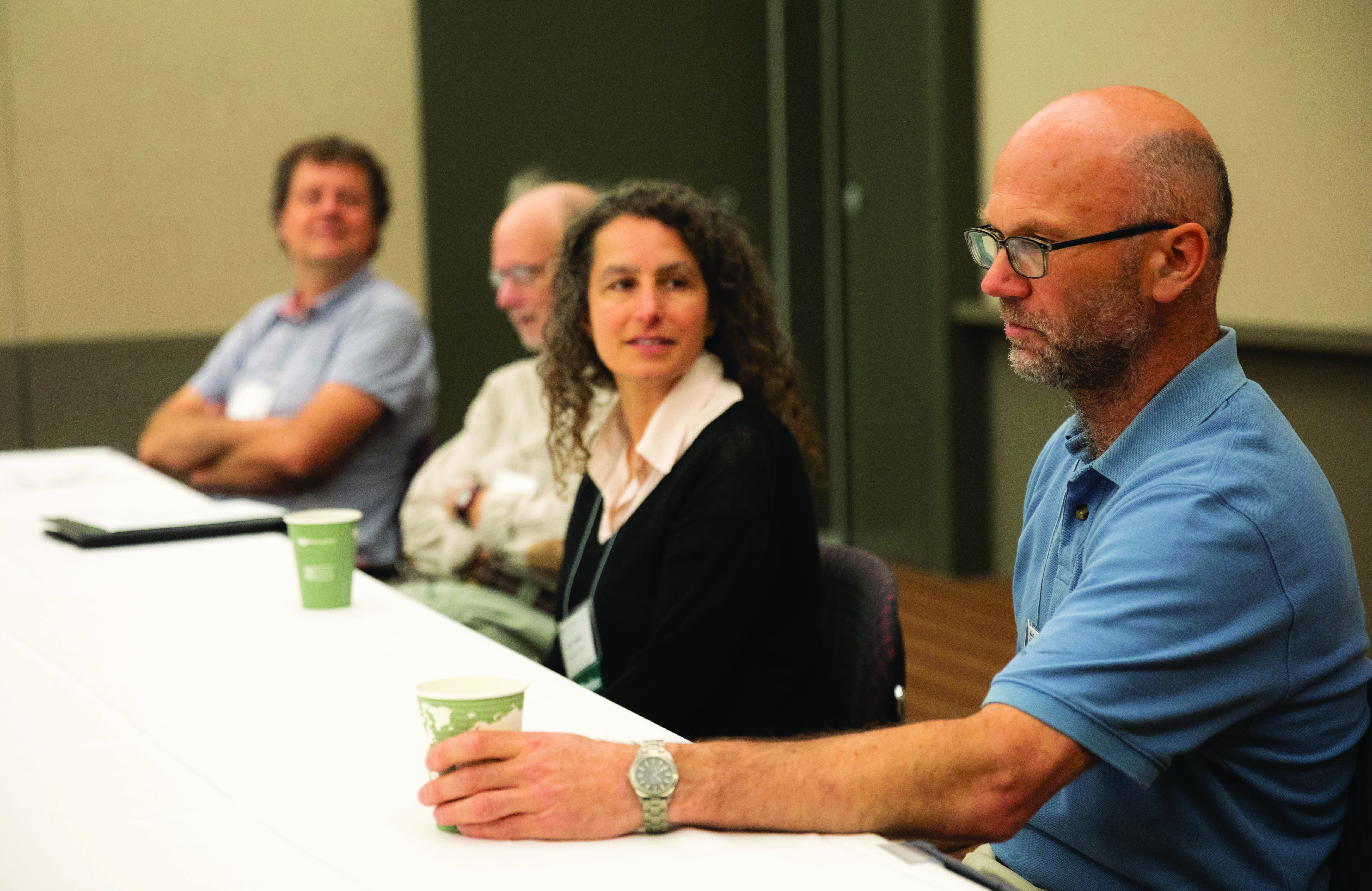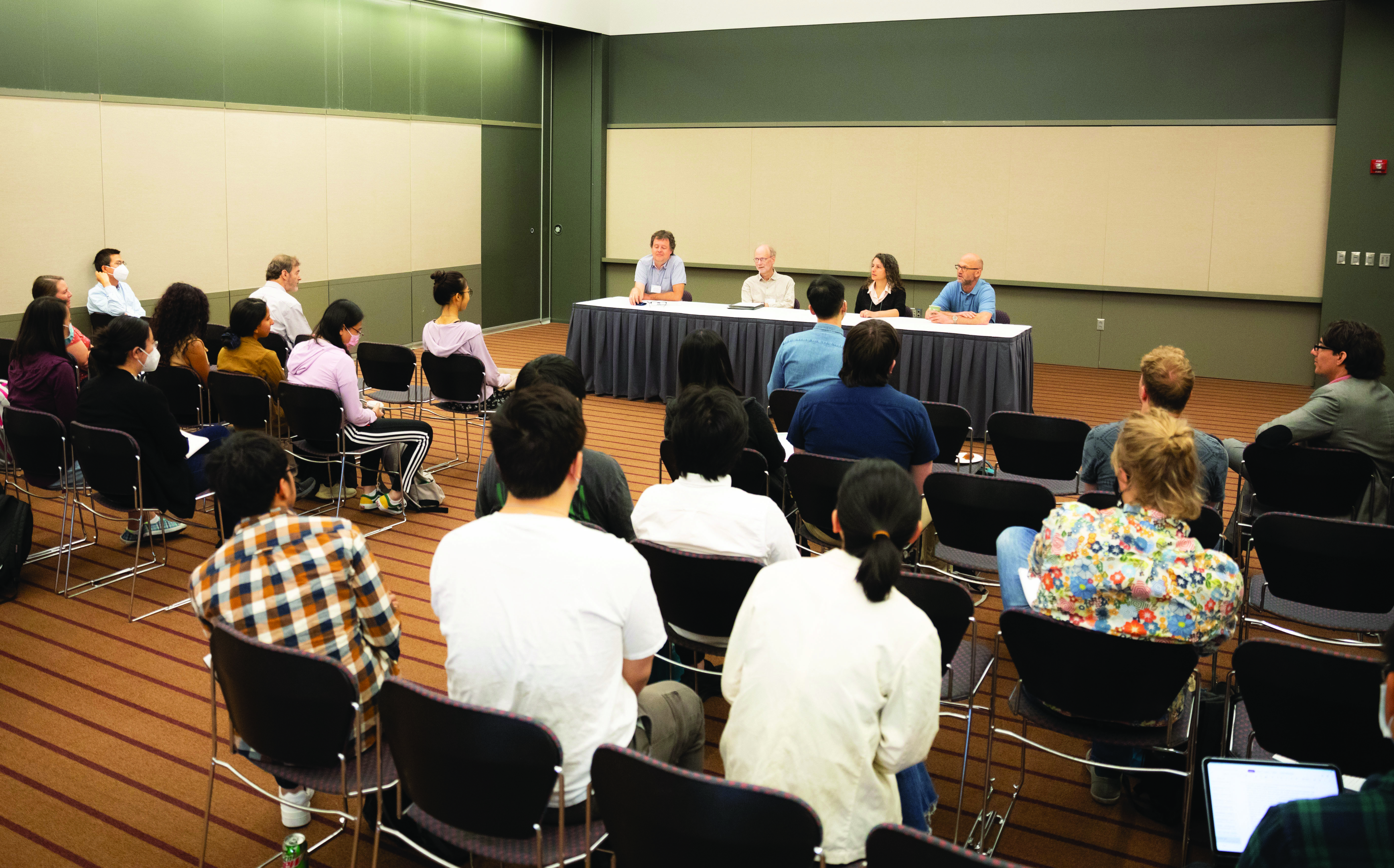Navigating the World of Journal Publication as an Early-career Researcher
Students and postdoctoral/early-career researchers must juggle multiple responsibilities while also taking the appropriate steps to strategically advance their budding careers. One important component of this process is consistent publication in reputable scientific journals. SIAM’s 18 peer-reviewed journals collectively serve as the leading source of knowledge for the world’s applied mathematics, computational science, and data science communities. During an inaugural session at the 2022 SIAM Annual Meeting, which took place in Pittsburgh, Pa., last year, four experienced SIAM publication experts offered advice to attendees who were interested in contributing to journals as authors and/or reviewers.
The panel comprised Howard Elman (University of Maryland), SIAM Vice President for Publications; Mark Ainsworth (Brown University), editor-in-chief of the SIAM Journal on Numerical Analysis (SINUM); Hans De Sterck (University of Waterloo), editor-in-chief of the SIAM Journal on Scientific Computing (SISC); and Evelyn Sander (George Mason University), editor-in-chief of the SIAM Journal on Applied Dynamical Systems (SIADS). The panelists spoke about effective writing and submission strategies for prospective authors, specified requirements for publication in SIAM journals, and commented on the review process.

“SIAM is the premier publisher of applied math across the board,” Elman said at the session’s onset. “If you think you have an interesting, good result, you should think of SIAM.” He encouraged early-career researchers to write with careful intention and consult their advisors throughout the process. “It’s hugely important to write well and state your ideas clearly,” Elman continued. “Not everyone will understand what’s in your head.” Authors must consider their draft’s readability from the perspective of potential readers and present proofs, analyses, results, and visuals—such as graphs, tables, and diagrams—in a way that is easily understandable to the intended audience.
De Sterck echoed Elman’s comments and added that a paper’s abstract and introduction should reflect the results’ novelty and prove that the work is worthy of consideration. Writers can even use selections from a well-written abstract to develop their “novelty statement:” a brief paragraph that highlights the contribution’s significance and value in the context of the existing literature. Because journal submissions are on the rise and acceptance is competitive, all journal editors—SIAM and otherwise—pay particular attention to novelty statements. “It’s important to express why you think an idea is meaningful and how it compares to what is already available in the literature,” De Sterck said.
When crafting the abstract and introduction, researchers should also think about their topic’s relevance to the journal in question in order to convince editors that the paper is a good fit. “If you decide to submit to a SIAM journal, make sure that you’re submitting to the right journal,” Sander said. For example, a dynamical systems article that does not emphasize applications is not appropriate for SIADS and might instead be better suited for a non-SIAM journal.
Ainsworth disclosed that most of the papers he rejects for SINUM are denied because authors neglected to follow the necessary editorial guidelines. “Pay attention to the basics,” he said. “Make sure that you’re fulfilling the criteria and your paper is formatted with the right typesetting package. This applies to experienced researchers as well.”
To make a submission even more compelling, authors can suggest referees, associate editors, and reviewers who are well equipped to handle the article. “This shows that you’ve investigated the journal, gives the editor an idea of how to view the paper, and demonstrates that you see where the paper might fit within the editorial board,” Sander said. De Sterck urged writers to recommend at least one associate editor for their papers, noting that the suggested individual(s) should ideally be well-established in their careers and experts with the material at hand.
When attendees asked the editors how they typically distribute papers to their editorial boards, De Sterck revealed that he keeps a file on hand with keywords that pertain to all of the associate editors at SISC, which helps him determine the ideal candidates for the job. Meanwhile, Ainsworth simply sends papers to associate editors who are familiar with the topic. “I make sure it goes to someone who really knows the field and can choose the right reviewers,” he said, commenting that he disliked receiving papers in unfamiliar areas when he was an associate editor because he had difficulty evaluating them.
Next, conversation turned to the nuances of the review process. “Reviewing a paper is a weighty responsibility,” Elman said. “You want to make the right judgment and be critical but fair.” Reviewers must assess the content’s accuracy and determine whether the paper is suitable for and fits the standards of the journal to which it was submitted. Peer-reviewed articles carry a certain level of prestige, and Elman encouraged reviewers to take their duties seriously. “It’s free labor on your part, but it’s part of being in the community,” he said. “Read papers that you think are interesting; give your best shot at a review; and if you think something is wrong, say so.”

Ainsworth echoed Elman’s remarks about reviewing as a community duty. “You want people to review your papers, so if someone asks you to review a paper, you should do it unless you have a very good reason not to,” he said. “It’s part of being a good citizen. If someone sends me a paper and I know I’m the right person to do it, I’ll agree even if I’m busy.” Ainsworth added that if a solicited individual must turn down a review request, they should suggest other possible reviewers rather than simply rejecting the invitation.
Sander pointed out that reviewing another researcher’s paper can even benefit one’s own career advancement. “If it’s the right paper for you, you should be reading it to that level anyway and helping to shape it,” she said. But she also cautioned against agreeing to serve as a reviewer and failing to follow through, as doing so only delays the publication process and hurts the author. “Being responsible for when you say ‘yes’ is a very important part of the process,” Sander said.
While the average time to a first decision for SIAM journals is four months, individual journals may vary widely. If one has not received a decision six to eight months after initial submission, it is perfectly acceptable to follow up with a request for information. Additionally, all four panelists agreed that publishing preprints to arXiv is worthwhile in terms of both the citations and the exposure.
Ultimately, the panelists encouraged all audience members to submit their research to SIAM journals, regardless of career stage or experience level. “SIAM publishes very high-level journals, but don’t feel that you’re not good enough,” Ainsworth said. “Talk to people, get advice, but don’t rule it out without trying.”
About the Author
Lina Sorg
Managing editor, SIAM News
Lina Sorg is the managing editor of SIAM News.

Stay Up-to-Date with Email Alerts
Sign up for our monthly newsletter and emails about other topics of your choosing.



